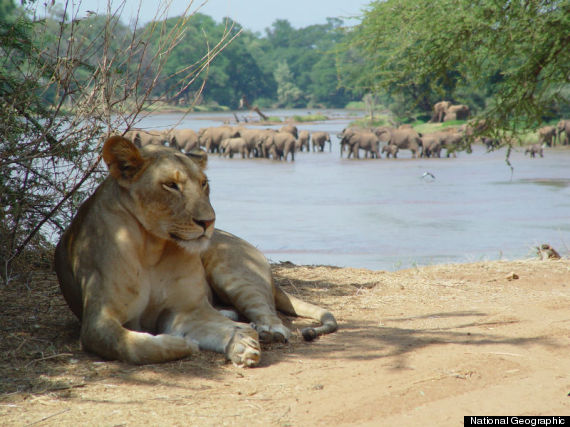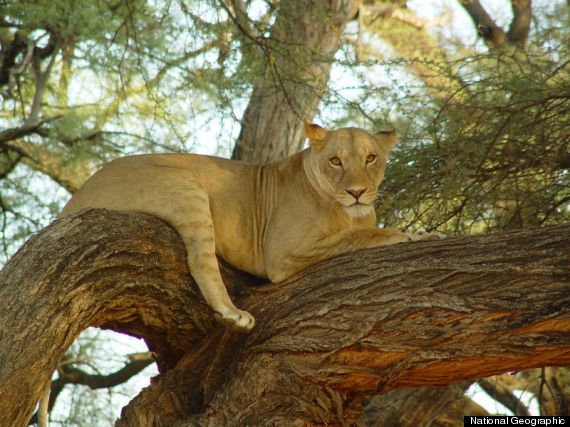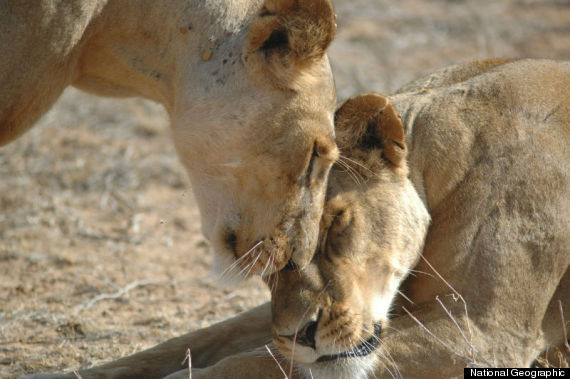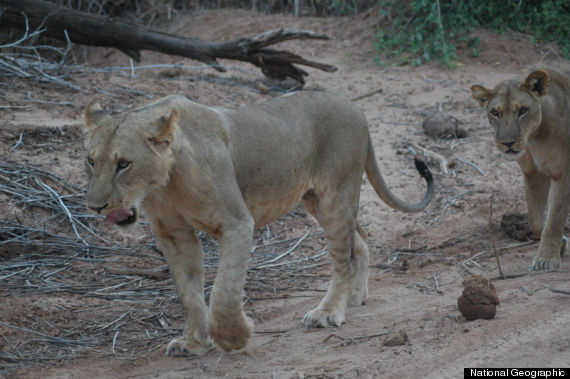Posted:
I have known Nashipai for over 12 years. Throughout that time, this beautiful lioness has taught me everything I know about Samburu lions and has become a personal favorite of mine. I remember vividly the first time I saw her -- she was a two-year-old lioness who, together with her sister Nabo, was inquisitively playing with a tortoise shell. That was the day we named the two girls. Nashipai means "beautiful, joyful one" and Nabo means "one," because she had one big spot on her nose when we first saw her. Looking back on that day in 2003, it is amazing to think I have followed the lives of these iconic lionesses for over a decade.

During this time, Nashipai has had several litters of cubs. However, unlike her attentive sister Nabo, Nashipai has not always been the best mother and often will leave it to her sister to do the lion's share of the cub rearing. Yet, when it comes to hunting, we cannot fault her. Of the 40 lions that make up our study population, Nashipai is the most formidable hunter and has been seen bringing down giraffe, zebra and oryx all by herself.

But now Nashipai is getting old (in the wild, life expectancy for lions is typically between 10 and 14 years); the jovial, playful lioness I remember is now struggling to keep up with her youngest three cubs, her teeth are worn and, since January, she has been regularly attacking and killing livestock.
The latter, in particular, concerns us greatly. Across Africa, lion numbers have been declining at an unprecedented rate and direct conflict with humans ranks among the most significant threats. In northern Kenya, lions like Nashipai are especially vulnerable because they typically live in or adjacent to areas inhabited by nomadic pastoralists. For the local Samburu people, livestock are their livelihoods, representing both wealth and status. When lions or other large carnivores prey on livestock, this understandably generates much anger and resentment. Often, herders will retaliate by fatally shooting, spearing or poisoning the lions. However, since 2007, Ewaso Lions have been working closely with the local people through a number of research and community-based programs.
Thanks to the success of our outreach programs, such as Warrior Watch, we have noticed a decline in the number of lions killed in retaliation over recent years. Our 15 Warriors are ambassadors in the region -- providing security for people and wildlife and encouraging people to tolerate lions, fulfilling our mission of promoting coexistence between lions and the people who share the same landscape.

So -- as you can imagine -- when Nashipai began to attack livestock, we were concerned about the safety of Samburu's most photographed lioness. Jeneria and his team of warriors were constantly out searching for her. We had also seen her cubs roaming alone for weeks, but no sign of the lioness. Finally, some of the guides who belong to our Lion Watch program reported that Nashipai had been spotted together with her cubs. We hope she remains safe. The Ewaso Lions team will continue to work together to ensure the protection of Nashipai and the other lions in Samburu.

To learn more about what you can do to keep lions and other big cats running wild, tune in to Big Cat Week through December 5 on Nat Geo WILD or log on to www.causeanuproar.org.
This post is part of a series produced by The Huffington Post in conjunction with Nat Geo WILD's Big Cat Week. To see all the other posts in the series, click here. For more information about big cats, check out National Geographic's Big Cats Initiative.
source
No comments:
Post a Comment